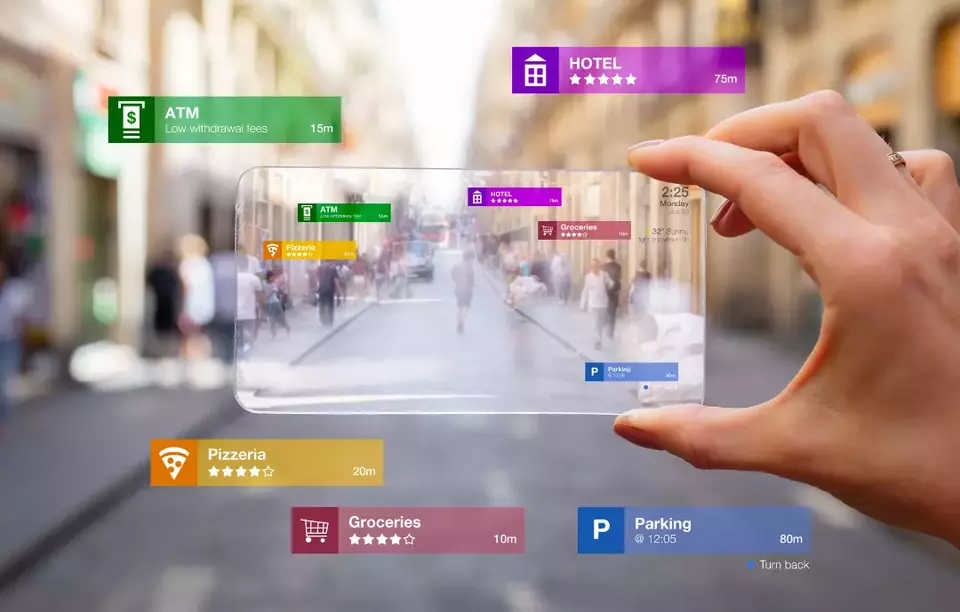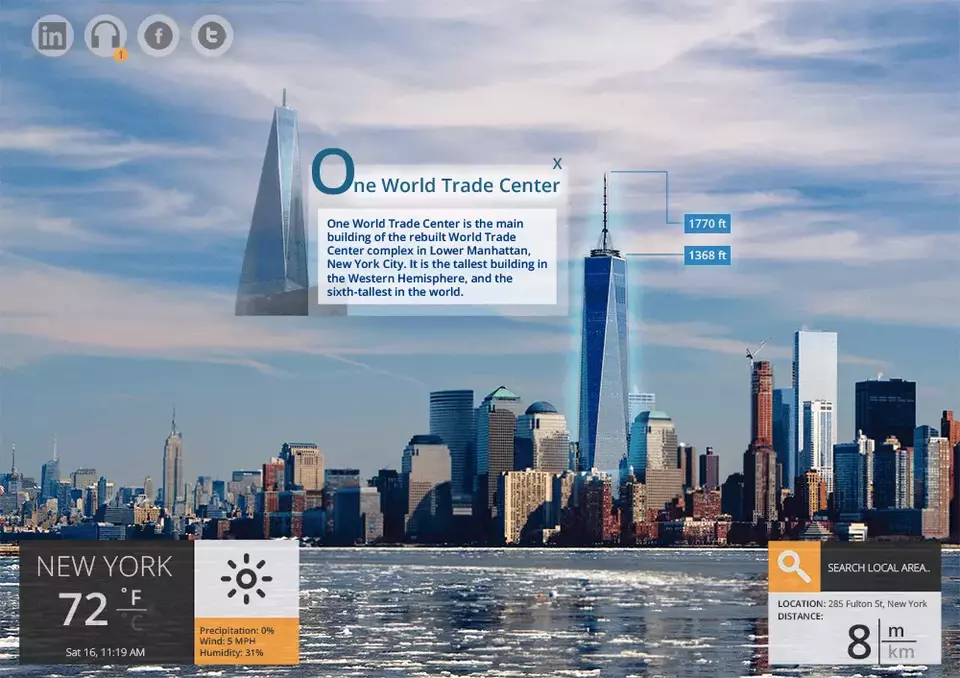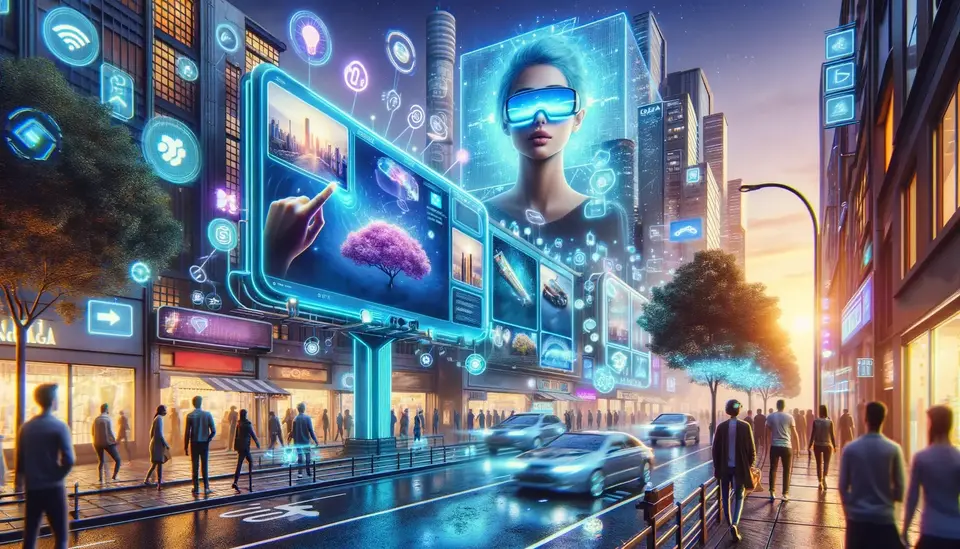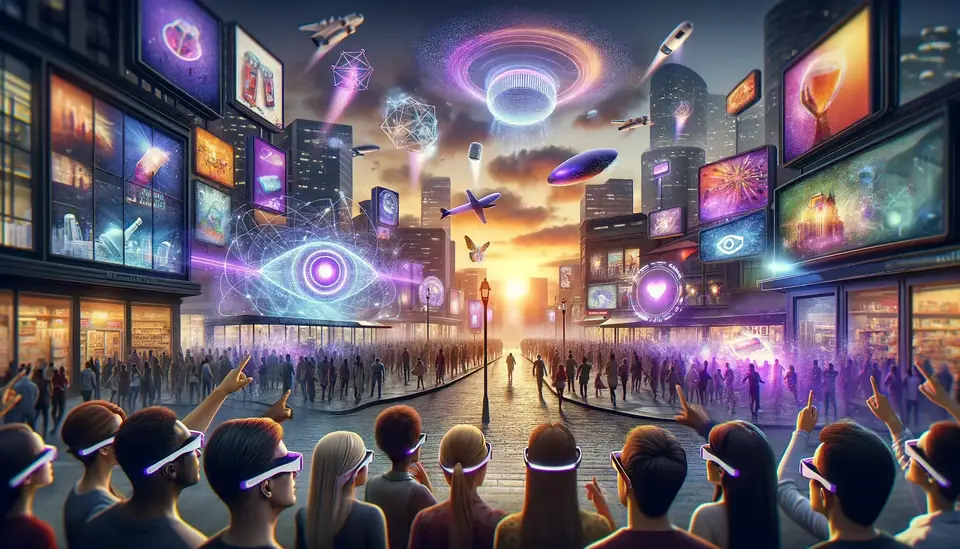The Future of Augmented Reality (AR) in Tourism
Posted on August 6, 2023 8 minutes 1550 words
Table of contents
Tourism, one of the most exhilarating experiences we embrace, continues to be transformed by the incredible pace of technological innovations. At the forefront of this revolution is Augmented Reality (AR), an emerging technology that overlays digital information onto the real world. Far from just being a tool for gaming or industrial applications, AR is gradually redefining how we explore and understand our planet. From simple navigation assistance to fully immersive historical recreations, the impact of AR in the travel sector is growing year after year. As we delve into the next exciting chapter of AR in tourism, let’s cast a forward-looking eye on what lies ahead.
The Evolution of AR in Tourism
AR has steadily evolved over the last few years, effectively weaving itself into the fabric of tourism. AR technology initially found its footing in providing navigation assistance. However, it quickly expanded its horizons. For instance, AR city tours have become increasingly popular, where smartphones or AR glasses guide tourists, provide information about landmarks, or even recreate historical events at specific locations.
Furthermore, museums and heritage sites have been early adopters of AR, using it to provide interactive and engaging tours. For example, the British Museum in London uses AR to help visitors interact with exhibits, providing additional digital information and visualizations. Theme parks, too, have been utilizing AR to enhance their attractions, providing thrilling experiences that blend the real and digital worlds.

Trends Shaping the Future of AR in Tourism
As we gaze into the crystal ball of technological progression, several emerging trends signal the future direction of AR in the tourism industry. These are not merely wishful predictions, but well-grounded projections formed on the bedrock of current advancements and future possibilities.
Hyper-personalization
In an era where personalization is king, AR is set to play a significant role in creating hyper-personalized tourism experiences. This trend extends far beyond merely suggesting activities based on your internet search history. The integration of AI, machine learning, and AR will enable real-time customization of travel experiences, adapting to your preferences as you explore. Imagine strolling through Rome’s ancient streets, where AR can provide you with a guided path based on your love for Roman history, pointing out lesser-known landmarks that others might miss. It could suggest the best local restaurants for a Roman feast, taking into account your dietary preferences, and even propose events happening around that resonate with your interests. The potential for such individualized experiences can transform tourism from a generalized to a deeply personal adventure.
Enhanced Accessibility
AR can erase physical boundaries, making inaccessible or fragile sites accessible to all. Remote locations, such as mountain peaks, dense jungles, or deep-sea environments, can be virtually explored without leaving the comfort of home. This is a revolutionary step, not only for those physically unable to reach these destinations but also as a measure to protect these sites from the detrimental impact of over-tourism. Furthermore, fragile archaeological sites or endangered ecosystems can be preserved and protected, as tourists can explore a highly detailed digital replica using AR, leaving the actual location undisturbed. This trend brings the potential to democratize travel experiences, allowing anyone with an AR device to explore the world freely.
Edutainment
The blending of education and entertainment is a powerful approach to engaging experiences. For many, understanding the history or cultural significance of a location enriches the travel experience. AR is perfectly poised to take edutainment to the next level in tourism. Museums and historic sites can use AR to animate exhibits, recreating historical events or visualizing extinct species, making the learning experience interactive and engaging. Picture visiting the ruins of ancient Greece and seeing the Acropolis in its full glory through your AR device, complete with narrations of its rich history and cultural importance. Such immersive educational experiences can transform tourism, making it not only a leisure activity but a platform for learning and cultural exchange.
Sustainable Tourism
The integration of AR into tourism has significant implications for sustainability. Over-tourism has been an escalating problem, causing environmental damage and disturbing local communities. AR offers a solution to this challenge, as it can simulate physical presence and interaction. Tourists could explore a detailed 3D model of a delicate coral reef or a crowded heritage site, reducing the physical impact on these sites. This digital approach also has the potential to manage tourist crowds effectively, as authorities can provide AR tours during peak hours, decreasing the pressure on physical infrastructure. In this way, AR could contribute to more responsible and sustainable tourism.
These trends depict a future where AR, integrated with other technologies and mindful strategies, can transform tourism into a personalized, accessible, educational, and sustainable experience. While there are challenges to be addressed, the potential benefits of AR in shaping the future of tourism are immense, making it an exciting space to watch.
Technological Advancements Pushing AR Forward
Advancements in various technologies are catalyzing the rapid growth and development of AR, particularly in the realm of tourism. These advancements are not just facilitating the delivery of AR experiences but also enhancing their quality, accessibility, and realism.
5G and Beyond
The implementation of 5G technology is proving to be a game-changer for AR. With its high-speed and low-latency data transmission, 5G is enabling more complex and realistic AR experiences that are virtually lag-free. But this is just the beginning. As we look beyond, the advent of 6G (expected to be operational by the end of the decade) will push the boundaries even further. 6G is projected to deliver ultra-fast data speeds, near-zero latency, and heightened network reliability. This technological leap would allow high-definition AR content to be streamed smoothly even in remote or densely populated areas, significantly enhancing the reach and quality of AR experiences in tourism. With these developments, we could see a world where tourists can download an entire city’s AR tour in a matter of seconds!
Wearable Technology
The evolution of wearable technology is another key driving force for AR. While smartphones currently serve as the primary platform for AR, the future points towards more intuitive and immersive devices such as AR glasses and headsets. These wearables can project digital information directly into the user’s field of view, providing a hands-free and more immersive experience. The recent advancements are also focused on making these devices more user-friendly and fashionable, encouraging wider acceptance. For instance, lighter, sleeker designs with longer battery life are becoming more common. Imagine walking through a historic city center wearing a stylish pair of AR glasses that blend with your outfit, while also guiding you through the city’s history and hidden gems. It’s not just about usability; aesthetic acceptability is also an essential factor for the widespread adoption of AR in everyday life, including tourism.

AI Integration
The combination of Artificial Intelligence (AI) and AR is set to revolutionize the interactive nature of tourism experiences. AI can analyze user behavior and preferences, allowing for dynamic changes in AR content. Machine Learning algorithms can analyze historical data and make real-time adjustments to AR experiences based on user feedback. This could enable a level of personalization and interactivity that surpasses anything we’ve seen before. For example, if an AI system recognizes that a tourist is interested in architecture based on the AR content they interact with, it could adjust their tour to highlight architectural landmarks. Furthermore, AI can also provide tourists with real-time language translation, contextual information, and predictive suggestions, making AR tours more intuitive and informative. These advancements in AI can make AR not just a visualization tool, but a smart and adaptive travel companion.
Each of these technological trends is playing a significant role in enhancing AR’s capabilities and making it more accessible and appealing for tourism. As these technologies continue to evolve, we can expect AR experiences to become more seamless, immersive, and personalized. However, it’s important to acknowledge that these advancements also come with challenges that need to be addressed, such as data privacy, digital divide, and the need for substantial infrastructure investments. Yet, as we’ve seen time and again, challenges are often the catalysts for innovation, and the future of AR in tourism is nothing if not a hotbed for innovative solutions.
Challenges and Solutions
While the future of AR tourism is brimming with potential, it’s essential to acknowledge and prepare for challenges. Data privacy is a significant concern as personalized AR experiences require access to sensitive user data. The digital divide may also exacerbate inequality in accessing AR tourism benefits. Moreover, developing and maintaining the necessary technological infrastructure could be a daunting task for some regions.
However, these challenges are not insurmountable. Robust data protection laws, public-private partnerships for technology distribution, and international cooperation for infrastructure development could mitigate these issues and ensure AR tourism’s successful and ethical growth.
Conclusion
The future of AR in tourism is an exciting realm, waiting to be fully explored. With its potential to democratize access to travel experiences, enhance educational opportunities, and promote sustainable tourism, AR promises a bright future. As we journey forward, AR stands poised to bring the world closer, making travel more immersive, accessible, and sustainable. While there may be challenges along the way, the convergence of AR and tourism presents an exciting new chapter in human exploration.








